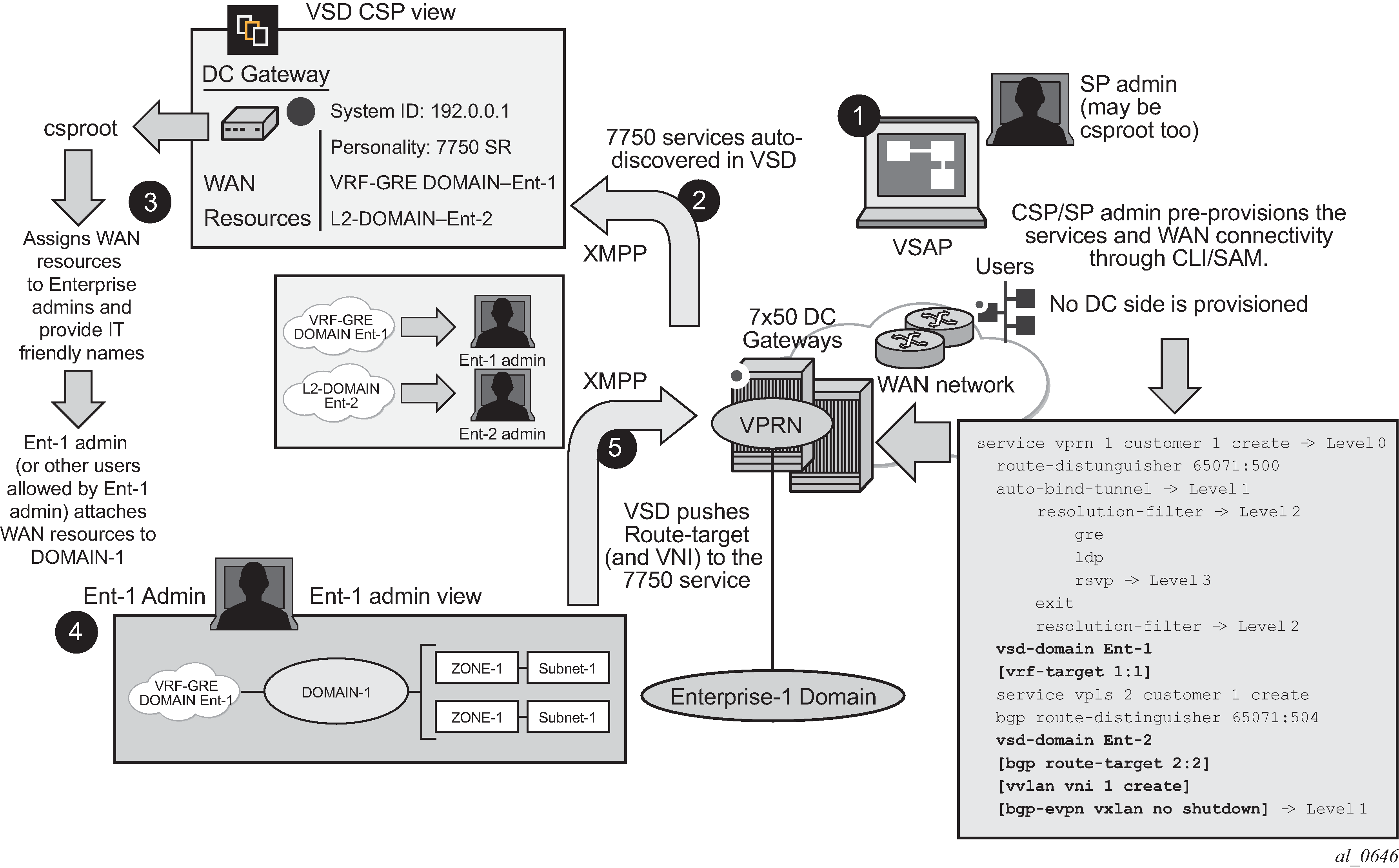In the Static-Dynamic integration model, the DC and DGW management entities can be the same or different. The DGW operator provisions the required VPRN and VPLS services with all the parameters needed for the connectivity to the WAN. VSD only pushes the required parameters so that those WAN services can be attached to the existing DC domains.
Figure: WAN services attachment workflow shows the workflow for the attachment of the WAN services defined on the DGW to the DC domains.

The Static-Dynamic VSD integration model can be summarized in the steps shown in Figure: WAN services attachment workflow and described in the following procedure.
The WAN or SP (Service Provider) administrator (which can be also the DC or Cloud Service Provider administrator) provisions the WAN services with all the parameters required for the connectivity to the WAN. This configuration is performed through the regular management interfaces, for example, CLI or SNMP. In the example above, there are two services created by the SP:
VPRN 1
This service is associated with vsd-domain Ent-1, which is a VRF-GRE domain.
VPLS 2
This service is associated with vsd-domain Ent-2, which is an L2-DOMAIN.
Note: The parameters between brackets ‟[..]” are not configured at this step. They are pushed by the VSD through XMPP.The router communicates with the VSD through the XMPP channel and allows VSD to know about its presence and available domains, Ent-1 and Ent-2. In the VSD’s User Interface (UI), the router shows up as DGW with its System ID, personality (for example, router) and the available WAN resources, that is, vsd-domains Ent-1 and Ent-2.
At VSD, the Cloud Service Provider administrator assigns the available WAN resources to Enterprises defined in VSD. In this example, VRF-GRE Ent-1 is assigned to Enterprise-1 and L2-DOMAIN Ent-2 to Enterprise-2.
-
Each Enterprise administrator has visibility of their own assigned WAN resource and attaches it to an existing DC Domain, assuming that both the DC domain and WAN resource are compatible. For instance, a VRF-GRE domain can only be attached to an L3 domain in the DC that uses GRE as transport.
When the Enterprise administrator attaches the WAN resource to the DC domain, the VSD sends the required configuration parameters to the DGW through the XMPP channel:
In the case of the VRF-GRE domain, VSD only sends the vrf-target required for the service attachment to the DC domain.
In the case of the L2-DOMAIN, VSD send the route-target (in the service>bgp or vsi-import/export contexts) as well as the vxlan vni and the bgp-evpn vxlan no shutdown commands.
WAN resources can also be detached from the DC domains.